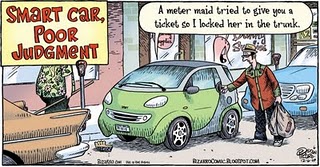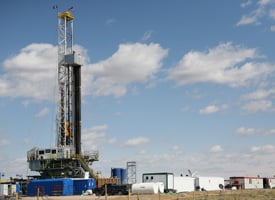When I was talking about making a list of your energy consuming equipment and taking actions like cleaning the coils on your refrigerator and your freezer, and cleaning the filters on your cooling and heating equipment, I forgot the most easy and largest savings step. That would be your hot water heater. Like the other equipment you do need to clean it. So listen to the plumbing guy about cleaning your gas or electric water heater. They are different:
Electric
http://www.youtube.com/watch?v=_GERpIx_QLo
Gas
http://www.ehow.com/video_4872205_clean-out-gas-hot-water.html
So was that fun or what. If you ended up with water allllllll over your basement floor, practice makes perfect. Now it is time to put on another layer of insulation. How much is up to you but R 60 is probably too much.
http://www.stretcher.com/stories/970127c.cfm
First turn your water heater thermostat to 120 no matter what this guy tells you 140 is too high unless you are a family of 5.
Most of us received our first introduction to the hot water heater blanket back in the ’70’s when conserving energy became important. They became a familiar addition to many homes. But how effective are they really? And can a heater blanket actually pay for itself if the hot water heater is in a part of the house that’s not subject to extreme weather? Let’s see if we can find out.
First, a little bit about water heaters and insulating blankets. A hot water heater is just a tank of water that’s heated to a preset temperature (generally about 140 degrees F.). When you use hot water it’s drawn from the tank and new cold water replaces it. Regardless of whether any water is used it takes energy to keep the water hot. Energy is always escaping to the colder air that surrounds the tank.
Almost all heaters have at least some minimal level of insulation to help keep the heat inside the tank. Newer models, especially those built in the last ten years, have more insulation than older models.
A water heater blanket is made of insulation contained in sheet plastic so that it can be attached to the water heater. Blankets are rated based on their ‘R’ value just like other insulation. A blanket with R-11 is recommended.
The blankets are easy to install. The only tools you’ll need are a razor knife and a tape measure. The cost is fairly modest with most running between $10 and $25.
How effective are they at reducing energy costs? The Iowa Energy Center says that a properly installed blanket can reduce energy loss by 25% to 45%. If you consider that Florida Power and Light estimates that the average family of four spends $25 each month for hot water that can be quite some savings. That’s not to say that you’ll save 25% of $25 each month. You’ll still need to heat water to replace the hot water in that shower. But a hot water blanket will pay for itself in short order.
Now let’s try to get specific about Joyce’s question. Does it still pay to install a blanket if your water heater is kept in the garage? How can you tell?
Begin by checking the owner’s manual for your water heater. Some newer models specifically recommend that you do NOT use a heater blanket. If your manual doesn’t mention blankets or you’ve lost the manual (someone please tell me that I’m not the only homeowner who doesn’t have his manual!) there’s a simple test you can do. Just place your hand on the outside of the heater. If it’s warm to your touch a blanket will save you money.
Is it possible to calculate how much money you’ll save? Well, theoretically yes. But unless you’re related to a grad student in advanced mathematics it’s probably not worth the effort. There are quite a few variables that will effect the answer. How much you pay for energy. How quickly your heater loses temperature. How efficient your water heater is in turning energy into hot water. How much hot water your family uses. Are there periods during the day when no water is being used? Remember, we’re only talking about an investment of $25 or less. We really don’t need sophisticated payback analysis here!
But what about Joyce’s question? We still haven’t answered it. Fortunately, there is a simple way to address it. If you can feel the heat with your hand it’s wise to install a blanket no matter what the surrounding air temperature is.
Look at it this way. Suppose you keep the tank in an unheated area that’s exposed to outside temperatures. The water tank is being heated to 140 degrees. It’s 20 degrees outside. That’s a difference of 120 degrees. Unless that tank is properly insulated you’d expect to lose some heat.
What about if you have the heater in a attached garage like Joyce? It’s probably not unreasonable to guess that the temperature drops to 60 degrees in the garage. That means that there’s still a difference of 80 degrees between the tank and the air surrounding it.
So if you saved the 25% with the heater outside, you could expect to still save 2/3 of that with the heater in the garage. (80 degrees divided by 120 degrees = 2/3) Well worth the time and money you’ll spend on installing a heater blanket.
One warning that we do need to pass along. DO NOT insulate the bottom or top of gas hot water heater tanks. You need to leave plenty of room for the pilot light and for the flue draft. Be very careful to follow installation instructions. Failure to do so could be very costly and dangerous!
In addition to water heater blankets, there are other things that you can do to reduce the costs of that hot shower. You can insulate the hot water pipes. Lowering the tank temperature is another option. Many people have installed timers and low flow shower heads. If you have an electric tank and it’s in the basement you might even want to place it on a Styrofoam pad to reduce the heat lost to the cold floor.
The bottom line is that water heater blankets are inexpensive, easy to install and efficient. You don’t need to be that family of four spending $300 each year for hot water the savings can add up. It’s an easy way to stretch a few dollars for something more important!
http://www.energysavers.gov/your_home/water_heating/index.cfm/mytopic=13070
:}
Notice what he said about insulation for the hot water line. They make slit foam cuffs that just slip over your warm water pipes. If you kitchen sink is a long way from your heater, (mine is 40 feet) it can take forever to get hot water and if you turn it off for very long you are back to cold again.
:}










